About the Company
Aquarelle, a division of the CIEL Textile Group, specializes in men’s casual and denim shirts and supplies leading retailers across global markets, including the United States, Europe, and Asia. The company has built a reputation for its ethical production practices and sustainability commitment, operating seven facilities across Mauritius, India, and Madagascar. These facilities produce over 12 million pieces annually, supporting Aquarelle's dedication to environmental responsibility and high-quality craftsmanship. With a team of 7,500 employees across multiple locations, Aquarelle plays a vital role in the apparel manufacturing industry.

WFX has provided us tremendous benefits over the past seven to eight years. The team’s involvement from implementation to post-implementation support has been exceptional. The system has also matured through collaboration, meeting our expanding needs. WFX’s continuous investment in technology upgrades and new features has kept us ahead of the curve.

Ravi Prakash
Group Head - Digital Transformation & IT, CIEL Textile

Challenges they faced
Before implementing WFX ERP, Aquarelle managed its operations using Excel, which, while initially effective, presented significant limitations as the company expanded. The lack of scalability and real-time collaboration capabilities within Excel created bottlenecks, as complex operations demanded a more robust solution. The absence of an integrated system meant that processes remained isolated across departments, limiting efficiency and transparency.
Additionally, manual data handling posed security risks and made traceability and risk management challenging, especially given Aquarelle's commitment to compliance with international standards. As operational complexity grew, it became clear that a standardized, automated system was essential to maintain consistency and support the company’s long-term growth objectives.
Impact after implementing WFX

Centralization of procurement, inventory, production, and finance into one system, eliminating manual inputs and data errors.

Improved data security and compliance through centralized cloud-based controls with audit trails and role-based permissions.

Real-time access to KPIs, inventory, and order statuses enabled faster, data-driven decision-making.

Scalable system architecture supported global expansion and adaptation to complex supply chains.

Standardized workflows across regions ensured consistent quality and operational uniformity.

User-friendly interface reduced training time, supporting workforce agility amid staff changes.

